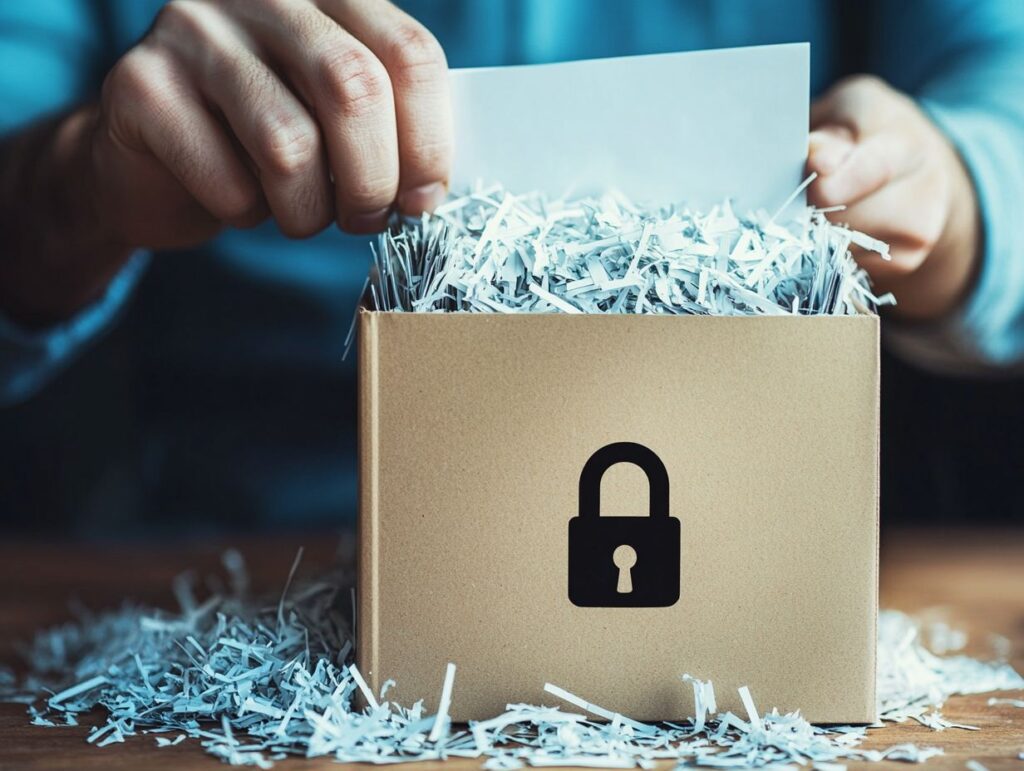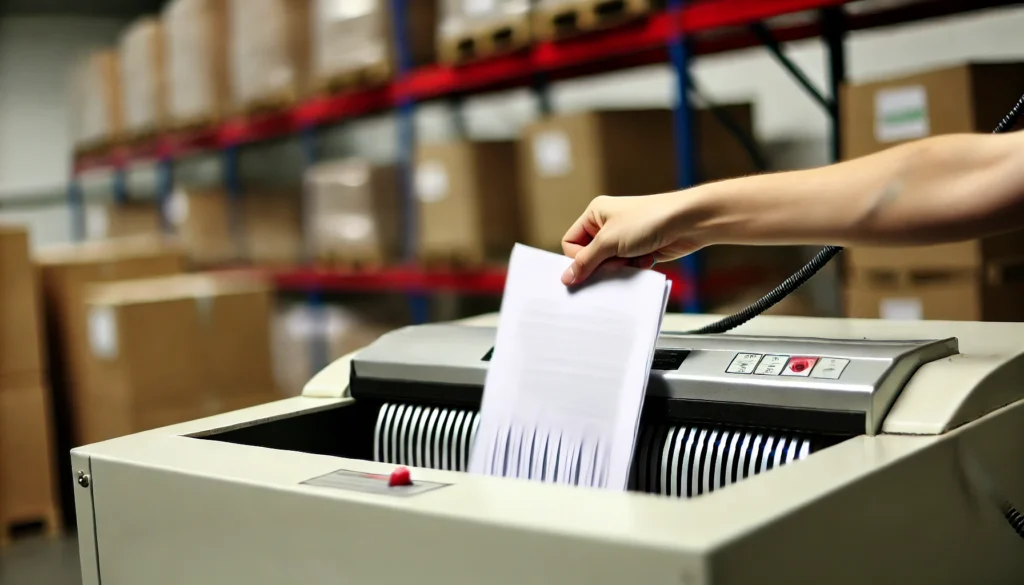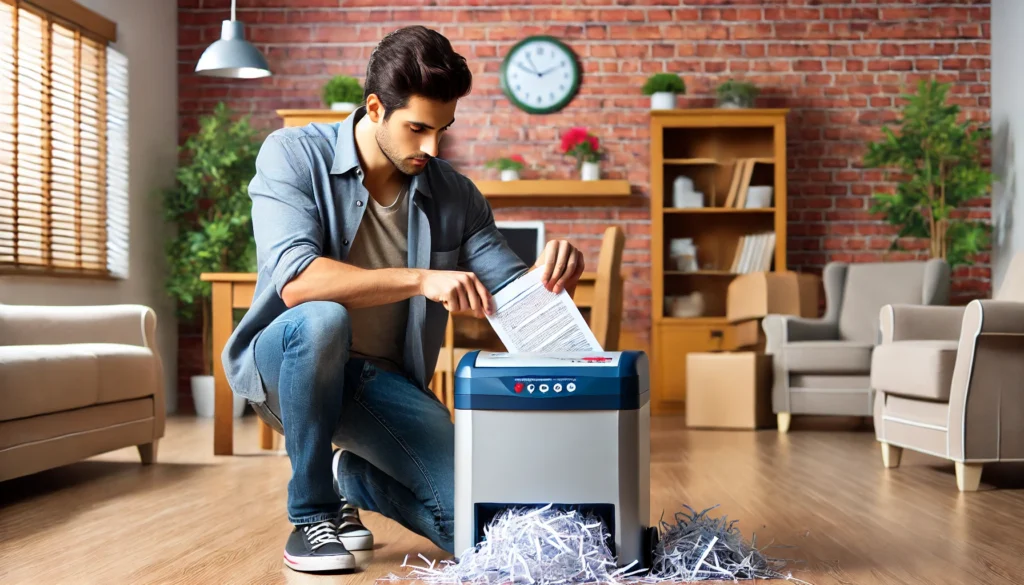Identity theft is a growing concern in today’s digital age, where personal information can be accessed easily if not properly safeguarded.
Understanding the nature of identity theft, including its common methods, is essential for protecting yourself.
This article explores the importance of residential shredding as a proactive measure against identity theft, detailing how shredding secures sensitive documents and enhances overall privacy.
It also provides practical tips on what to shred, the best methods for shredding, and additional security measures to help keep personal information safe.
Understanding Identity Theft

Understanding identity theft is paramount in today’s digital age, where unauthorised access to personal information can result in considerable financial and emotional distress. With statistics indicating an increase in fraudulent activities, it is essential to prioritise identity theft prevention strategies.
Identity fraud can impact anyone, and awareness of the methods employed by criminals is crucial for personal protection. This knowledge enables individuals to adopt effective identity protection measures, monitor their digital identities, and manage their personal information securely.
Privacy protection is critical in mitigating the risk of identity theft and safeguarding consumer rights.
What is Identity Theft?
Identity theft is defined as the unlawful acquisition and utilisation of another individual’s personal information, frequently resulting in unauthorised access to financial assets or sensitive data.
This criminal act can take various forms, including the use of someone’s National Insurance number to establish bank accounts, obtain loans, or make fraudulent online purchases. Identity theft typically occurs through methods such as data breaches, wherein cybercriminals exploit vulnerabilities in systems to extract substantial amounts of personal information, or phishing scams that deceive individuals into disclosing sensitive information.
The consequences for victims can be severe, encompassing damaged credit scores and potential financial hardship, as addressing the aftermath of such breaches often demands considerable time and effort.
Common Methods of Identity Theft
Common methods of identity theft encompass tactics such as phishing, rubbish diving, and the exploitation of data breaches, each presenting distinct challenges to information security.
These strategies frequently involve deceitful practices aimed at acquiring sensitive information, such as National Insurance numbers or banking details, often without the victim’s awareness. For example, phishing schemes typically disguise themselves as legitimate communications from trusted entities, enticing individuals to disclose personal information.
Individuals who engage in rubbish diving sift through discarded documents in search of material that may reveal confidential information. It is imperative for individuals to take proactive measures to detect fraud by monitoring their financial statements and utilising identity protection services.
Maintaining vigilance regarding the sharing of personal data online can significantly mitigate the risk of becoming a victim of these tactics.
Importance of Residential Shredding

Residential shredding is essential for safeguarding personal data through effective document destruction. As identity theft becomes more prevalent, secure shredding services ensure that sensitive information is irretrievably destroyed, thereby enhancing data protection and privacy.
Implementing shredding guidelines within the home not only protects confidential documents from potential misuse but also fosters a culture of security in daily practices. This proactive approach to shredding can substantially reduce the risk of identity fraud and unauthorised access to personal information, rendering it a crucial practice for every household.
How Shredding Protects Against Identity Theft
Effective shredding serves as a vital safeguard against identity theft by ensuring the secure destruction of sensitive documents, thereby preventing unauthorised access to confidential waste.
This meticulous process not only protects personal information but also plays a critical role in fraud prevention. When individuals and organisations participate in secure shredding, they significantly mitigate the risk of identity theft, as discarded documents containing personal identification details are rendered unreadable.
Thus, implementing a robust document management system that incorporates shredding practices is essential for organisations to maintain compliance and foster trust among their clients.
This proactive approach to information security highlights the importance of establishing regular shredding schedules, equipping all stakeholders with the necessary tools to effectively combat identity theft and enhance overall data protection.
Benefits of Regular Shredding
Regular shredding provides numerous advantages, including enhanced consumer protection, proper disposal of personal information, and the promotion of recycling for shredded paper.
When individuals and businesses implement a consistent shredding schedule, they significantly reduce the risk of identity theft and data breaches, thereby fostering a climate of trust and safety. By employing shredding solutions that emphasize eco-friendly practices, the resultant paper waste contributes to a sustainable recycling process, supporting a circular economy.
This approach not only diminishes landfill waste but also conserves natural resources, reflecting a commitment to environmental stewardship. Ultimately, maintaining a regular shredding routine reinforces a culture of responsibility, where both consumer rights and ecological impact are prioritized.
How to Properly Shred Sensitive Documents

The proper shredding of sensitive documents is critical for ensuring secure document disposal and mitigating risks associated with identity theft. A comprehensive understanding of the shredding process, along with the identification of documents that necessitate shredding, constitutes the initial step towards effective data protection.
The use of reliable shredding machines is essential for achieving thorough destruction and adhering to established shredding best practices. This methodology not only enhances personal safety but also complies with privacy laws and regulations governing document management.
Types of Documents to Shred
Documents containing sensitive data, such as financial records, medical information, and personal identification, must be shredded to prevent identity theft and ensure compliance with privacy policies.
Furthermore, it is equally important to securely dispose of utility bills, tax returns, and bank statements. These documents often contain information that, if misused, can result in financial loss or unauthorised access to personal accounts. Discarded materials, such as credit card offers or employment records, should not be underestimated, as they can serve as pathways for individuals seeking to exploit vulnerable personal data.
By shredding these documents, individuals take a critical step towards maintaining their privacy and protecting their identities in an increasingly digital landscape.
Methods of Shredding
Various methods of document shredding exist, including the use of shredding machines and electronic shredding services, each offering distinct advantages for secure disposal.
For example, physical shredding machines enable users to process bulk documents on-site, making them particularly suitable for businesses with heightened security requirements. In contrast, electronic shredding services present a streamlined solution for organisations managing smaller volumes of sensitive files or those seeking the convenience of off-site processing.
When assessing these options, it is essential to consider the effectiveness of the different shredding types, which range from strip-cut to cross-cut, in ensuring that documents cannot be reconstructed. Logistics also play a critical role; on-site shredders provide immediate confirmation of material destruction, while professional services typically include collections and , addressing varying operational needs.
Additional Measures for Preventing Identity Theft

Along with shredding documents, it is imperative to implement further measures for preventing identity theft as part of a comprehensive risk management strategy and to ensure personal safety.
Other Security Measures to Consider
Other security measures to consider for preventing identity theft include robust identity verification practices, secure storage solutions, and strict compliance with data protection laws.
These strategies are essential for safeguarding sensitive information from unauthorised access and potential fraud. For example, implementing two-factor authentication significantly enhances account security, making it more difficult for cybercriminals to compromise personal data.
Additionally, employing comprehensive fraud detection systems allows for the monitoring of suspicious activities in real-time, facilitating prompt intervention. Ensuring that documents containing personal information are stored in locked, secure environments provides an additional layer of protection.
By integrating these practices, individuals and businesses can establish a more robust defence against the continually evolving threats of identity theft and data breaches.
Best Practices for Protecting Personal Information
Implementing best practices for the protection of personal information is essential for safeguarding against identity theft and ensuring data privacy.
To effectively navigate the complexities of the digital landscape, individuals should prioritize strategies that enhance their security posture. This includes the regular updating of passwords and the utilisation of two-factor authentication, which provides additional layers of protection.
Close monitoring of financial statements can alert individuals to unauthorized transactions, while a solid understanding of consumer rights enables them to take action in the event their information is compromised. Utilising identity theft resources, such as credit monitoring services, offers peace of mind and timely notifications.
Engaging in proactive information management not only safeguards sensitive data but also cultivates an environment in which personal privacy is respected and upheld.
Frequently Asked Questions
How does residential shredding help prevent identity theft?
Residential shredding is an effective way to dispose of sensitive documents that contain personal information, which can be used by identity thieves. By shredding these documents, you eliminate the risk of them falling into the wrong hands.
What types of documents should be shredded to prevent identity theft?
Any document that contains personal information such as your name, address, social security number, bank account numbers, and credit card information should be shredded to prevent identity theft. This includes old bills, bank statements, credit card statements, and even junk mail.
How often should I shred my documents?
It is recommended to shred your documents on a regular basis, at least once a year. However, if you handle a large volume of sensitive documents, it is best to shred them more frequently, such as every 3-6 months.
Can I recycle shredded documents?
Yes, shredded documents can be recycled. However, it is important to properly dispose of them in a secure recycling bin or take them to a recycling facility to ensure the shredded pieces cannot be reconstructed.
Is residential shredding a secure method of document disposal?
Yes, residential shredding is a secure and reliable method of document disposal. Shredding companies use industrial-grade shredders that turn your documents into confetti-sized pieces, making it nearly impossible for anyone to reconstruct them.
Can I shred my documents myself or should I hire a professional shredding service?
While you can shred your documents yourself, hiring a professional shredding service offers added security and convenience. They will provide you with locked shredding bins, schedule regular pick-ups, and ensure your documents are properly disposed of in a secure and environmentally-friendly manner.

